The return of Lotus to Formula One in 2010 is a bitter sweet scenario for many. The much revered icon of British motorsport is now heavily backed by outside influences with Malaysian ownership under the watch of Proton since 1994. Will the return of Lotus to the F1 grid honour the memory of the late, great Colin Chapman? Or will its return be a once great star that fails to glimmer as brightly as in times past?
At this stage, at least, the current holders of the Lotus name seem to be making the right noises in regards to understanding the burden they carry with their return to the Formula One paddock.
Having just been given the keys to the Lotus F1 Racing media portal it was a nice surprise to discover these old skool images. A timely find, too, as today marks the 27th year since Colin Chapman passed away.
Also of note is an article which briefly documents the history of Lotus in F1. That piece, along with more images to accompany that stunning image of Graham Hill in a Lotus 49B from the 1969 German Grand Prix can be seen after the jump.
For more historic Lotus racing material, check out the Classic Team Lotus website.
Lotus in Formula 1
Lotus F1 Racing was granted its entry into the 2010 Formula 1 World Championship by the sport’s governing body, the FIA, in September 2009. The decision sees the return of one of Formula 1’s most iconic and legendary names. Although Lotus F1 Racing is a new entity with a distinct Malaysian character, the team aims to respect the esteemed Lotus name, which is one of the most successful in Formula 1 history.
Led by founder and motorsport genius Colin Chapman, Team Lotus scored seven constructors’ and six driver’s titles in the 1960s and 1970s with a total of 79 race wins and 107 pole positions for Lotus as a Formula 1 manufacturer. Impressive statistics, but the numbers alone do not do justice to a team that motorsport enthusiasts around the world still hold with high regard today.
Since its Formula 1 debut in the 1958 Monaco Grand Prix, Team Lotus designed and developed some of the most innovative machinery of its day and attracted some of Formula 1’s greatest drivers over the years. Jim Clark, Graham Hill, Jochen Rindt, Emerson Fittipaldi and Mario Andretti were all title winners with Team Lotus, while other legends like Sir Stirling Moss, Nigel Mansell and Ayrton Senna all drove Lotus machinery.
The turn of the 1960s saw the birth of Colin Chapman’s first mid-engine Formula 1 car after two largely unsuccessful years with the front-engined Lotus 12 and 16 machines. The resultant Lotus 18 gave the company its first ever GP victory as Stirling Moss was triumphant around Monte-Carlo for the privateer Rob Walker Racing Team.
In 1961, Innes Ireland took the first victory for Team Lotus at the US Grand Prix at Watkins Glen. In 1962, Lotus 22, 23 and 24 all made it to the race track but were quickly eclipsed by the Lotus 25, the first fully stressed monocoque chassis to appear in Formula 1, which led Jim Clark and Team Lotus to a dominant maiden championship title in 1963 with seven wins. Clark took an additional three wins in the Lotus 25 in 1964 but saw the championship slip away in the final lap of the final race of the season as his engine developed an oil leak.
Team Lotus had already started to develop the successor to the 25, the Lotus 33, which was an evolution of the type 25 with its monocoque structure and a Coventry Climax 1.5 litre engine. The car debuted in 1965 and took Jim Clark to his and Team Lotus’s second championship title.
In 1966, Lotus moved to a purpose-built factory based in Hethel, Norfolk, home of Lotus to this day and just 10 miles from where the new Lotus F1 Racing factory is based. After a disappointing season on track, the team switched to the legendary Cosworth-Ford DFV V8 engine for 1967 and the team was back on dominant form in time for the 1968 season with Jim Clark leading Graham Hill for a 1-2 in South Africa. Despite the Lotus 49 heralding a third constructors’ and drivers’ Formula 1 title with Graham Hill, it was a tragic year for Team Lotus with the loss of Jim Clark in a Formula 2 race, leaving the racing world devastated.
In 1970, Jochen Rindt took the Lotus 49 and new Lotus 72 to victory en route to both constructors’ and drivers’ titles, but he was tragically killed at Monza before the season’s end. A barren season for Lotus in 1971 was followed BY the birth of the classic black-and-gold John Player Special livery. The team took the 1972 championship by storm with the up-and-coming Brazilian driver Emerson Fittipaldi pulling off a spectacular championship double. Team Lotus went on to take the 1973 constructors’ title.
While the 72 broke new ground in aerodynamics, it was towards the middle of the 1970s that the team’s engineers started to explore aerodynamic ground effects. In 1977, the introduction of the ground effect Lotus 78 saw Team Lotus take second place in the championship, but in 1978 the team scored the double once again with Mario Andretti taking the drivers’ crown in the cockpit of the aerodynamically-innovative Lotus 79.
Lotus continued to evolve its aerodynamics yet further with the introduction of the Lotus 80 Wingless Wonder. The type 80 was a development of the dominant 79, taking the ground effect concept to a new level by maximising the underwing area of the car and not having the drag including topside mounted wings.
In 1982, Anthony Colin Bruce Chapman, founder and driving force behind Lotus, tragically died at the age of 54.
Team Lotus endured some tough seasons, although a switch to Goodyear tyres in 1984 helped Elio de Angelis to third in the championship despite not being victorious while Nigel Mansell took his first pole position.
Mansell left the team at the end of 1984 and was replaced by Ayrton Senna. In only his first season in the Lotus 97T, Senna won in the treacherous rain in Portugal and again in Spa while De Angelis took a win in Imola. In 1986, the evolutionary Lotus 98T helped the team to third in the constructors’ championship and forged a new sponsorship deal with Camel in time for the 1987 season.
With backing from engine supplier Honda and a new design with the 99T, which featured active suspension, the team again claimed third in the championship with Senna taking two wins in Monaco and Detroit. For 1988, Senna moved to McLaren while Lotus signed then reigning world champion Nelson Piquet, bringing number 1 status to the Lotus 100T. Neither Piquet nor team-mate Satoru Nakajima was in a position to fight for victories.
Results soon started to tail off for Team Lotus in the early 1990s and the team were left challenging for points rather than podiums or victories. With troubles escalating, Team Lotus competed in its final Formula 1 race in the 1994 Australian Grand Prix.
Images (from top to bottom):
- 1969 German GP, Nurburgring, Germany, 3rd August 1969, Graham Hill, Lotus 49B Cosworth – 4th place.
- 1963 British Grand Prix, Silverstone, Great Britain, 20 July 1963, Jim Clark, Lotus 25-Climax, 1st position, with Colin Chapman, podium.
- 1972 Austrian Grand Prix, Oesterreichring, Zeltweg, Austria, 11-13 August 1972, Emerson Fittipaldi, Lotus 72D Ford; 1st position chats with team boss Colin Chapman.
- 1978 Swedish Grand Prix, Anderstorp, Sweden, 15-17 June 1978, Mario Andretti, Lotus 79 Ford; leads Niki Lauda, Brabham BT46B Alfa Romeo; Riccardo Patrese, Arrows FA1 Ford; and John Watson, Brabham BT46B Alfa Romeo; at the start. Lauda and Patrese finished in 1st and 2nd positions respectively while Andretti failed to finish.
- 1985 Italian GP, Monza Italy, 6-8 September 1985, Ayrton Senna, Lotus 97T-Renault, 3rd position, at Parabolica.
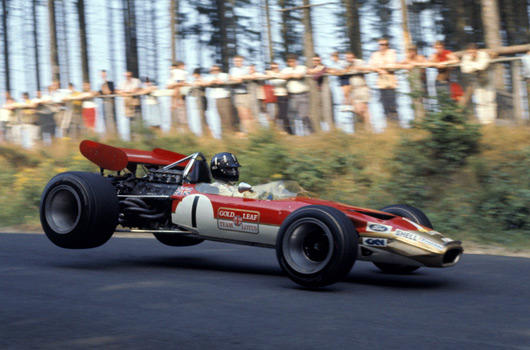
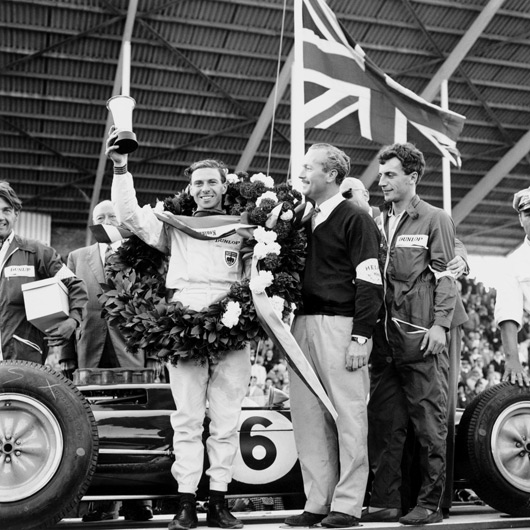
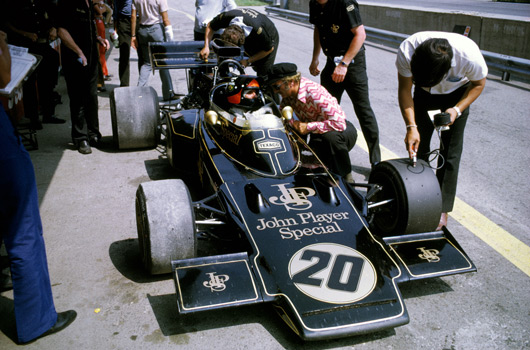
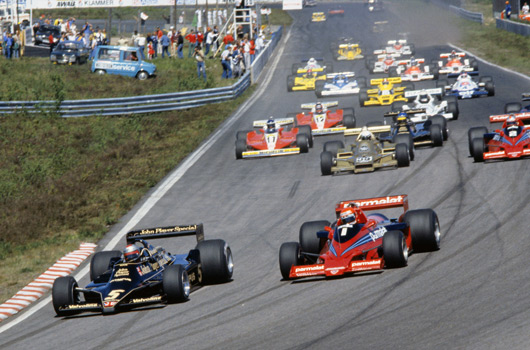
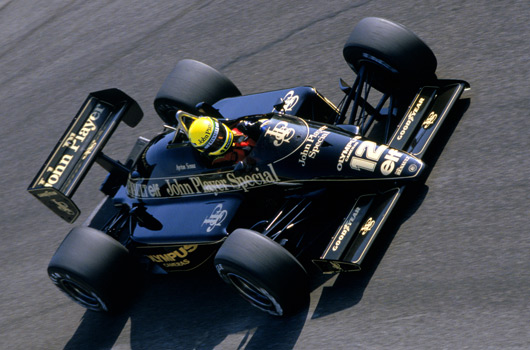
6 replies on “Lotus in Formula One”
[…] For more on the 1969 German Grand Prix check out this AUSringers post from July last year, which includes video footage from the race, won by Jacky Ickx in a Brabham. For more on the return of Lotus to the F1 grid in 2010, check out AUSmotive.com. […]
Is that Graham Hill car part of Nick’s collection? Looks like the one he brough to Melb GP?
Yes, I do believe he kept a Lotus 49.
[…] is Lotus right? The people who made the famous Formula One cars of old are the same folks that made the road cars? Nope. It wasn’t then, and it most certainly […]
I am an F1 fan who met Graham Hill at Watkins Glen when I was a teenager. I stumbled across the image of him airborne in his Gold Leaf red Lotus at N-ring. Is it possible to purchase this image for framing? If so, How does one contact the seller?
Thank you.
Carl, I reckon your best bet would be to initiate contact with Classic Team Lotus and see if they can help:
http://www.classicteamlotus.co.uk/default.aspx